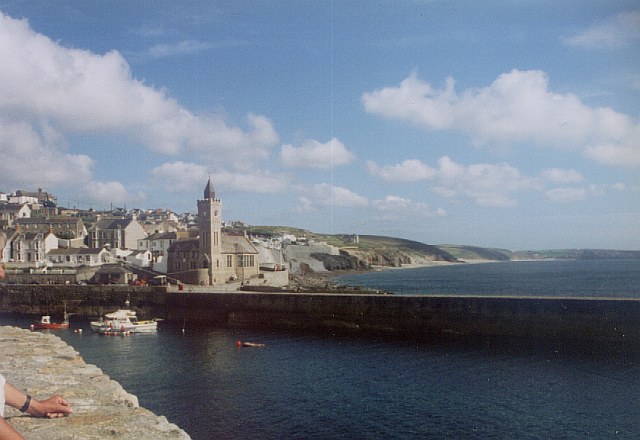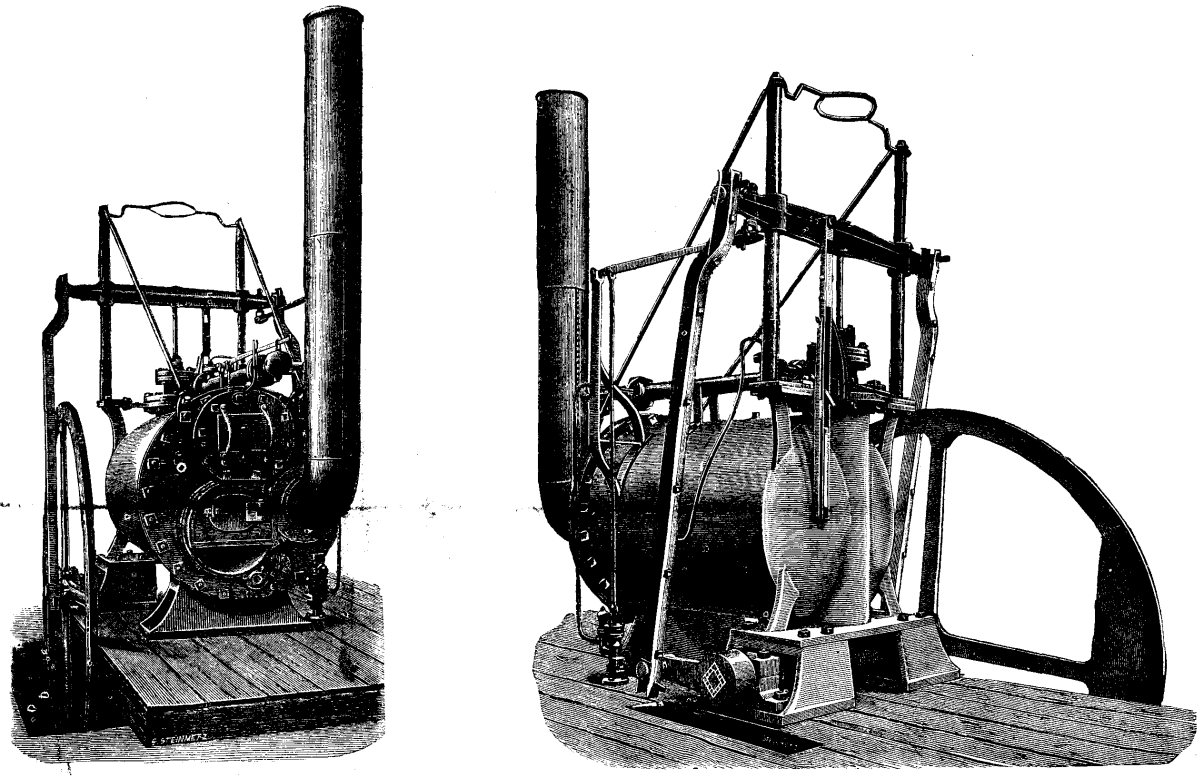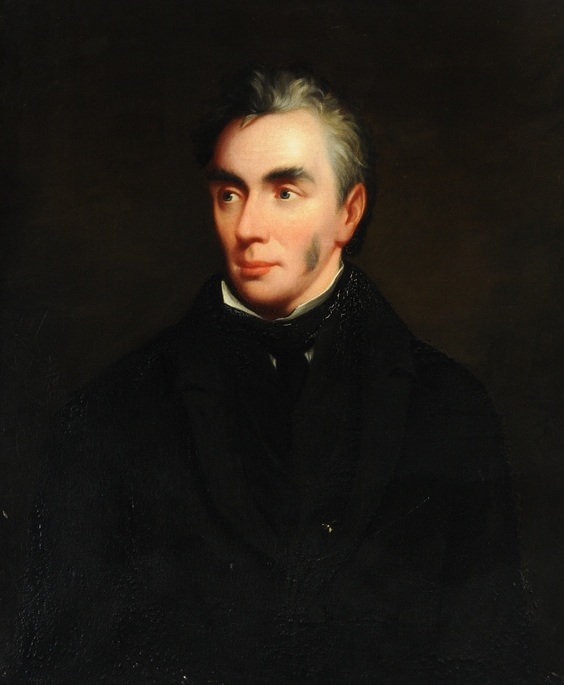|
Neville Northey Burnard
Nevil or Neville Northey Burnard (11 October 1818 – 27 November 1878) was a 19th century English sculptor best known for his portrait figures. Life Burnard was born in the village of Altarnun, on the edge of Bodmin Moor in Cornwall. He was the son of George Burnard, a local stonemason. He trained under his father and showed a talent from an early age. Aged sixteen years, he sculpted a relief portrait of John Wesley over the doorway of Altarnun Wesleyan chapel next to his home. He went on to win the Silver Medal of the Royal Cornwall Polytechnic Society for his group Laocoon and His Sons. Around 1835 Sir Charles Lemon MP became his patron and took him to London where he persuaded Francis Chantrey to take him and train him further in his studio. Burnard exhibited at the Royal Academy from 1848 to 1873.Dictionary of British Sculptors 1660-1851 by Rupert Gunnis He became a celebrated society sculptor, was introduced to Queen Victoria, and his work was exhibited at the Royal ... [...More Info...] [...Related Items...] OR: [Wikipedia] [Google] [Baidu] |
Richard Landers Monument (geograph 2010171)
Richard is a male given name. It originates, via Old French, from Frankish language, Old Frankish and is a Compound (linguistics), compound of the words descending from Proto-Germanic language, Proto-Germanic ''*rīk-'' 'ruler, leader, king' and ''*hardu-'' 'strong, brave, hardy', and it therefore means 'strong in rule'. Nicknames include "Richie", "Dick (nickname), Dick", "Dickon", "Dickie (name), Dickie", "Rich (given name), Rich", "Rick (given name), Rick", "Rico (name), Rico", "Ricky (given name), Ricky", and more. Richard is a common English, German and French male name. It's also used in many more languages, particularly Germanic, such as Norwegian, Danish, Swedish, Icelandic, and Dutch, as well as other languages including Irish, Scottish, Welsh and Finnish. Richard is cognate with variants of the name in other European languages, such as the Swedish "Rickard", the Catalan "Ricard" and the Italian "Riccardo", among others (see comprehensive variant list below). People ... [...More Info...] [...Related Items...] OR: [Wikipedia] [Google] [Baidu] |
Royal Academy
The Royal Academy of Arts (RA) is an art institution based in Burlington House on Piccadilly in London. Founded in 1768, it has a unique position as an independent, privately funded institution led by eminent artists and architects. Its purpose is to promote the creation, enjoyment and appreciation of the visual arts through exhibitions, education and debate. History The origin of the Royal Academy of Arts lies in an attempt in 1755 by members of the Society for the Encouragement of Arts, Manufactures and Commerce, principally the sculptor Henry Cheere, to found an autonomous academy of arts. Prior to this a number of artists were members of the Society for the Encouragement of Arts, Manufactures and Commerce, including Cheere and William Hogarth, or were involved in small-scale private art academies, such as the St Martin's Lane Academy. Although Cheere's attempt failed, the eventual charter, called an 'Instrument', used to establish the Royal Academy of Arts over a decad ... [...More Info...] [...Related Items...] OR: [Wikipedia] [Google] [Baidu] |
William Bickford-Smith
William Bickford-Smith (1827 – 24 February 1899) was an English fuse manufacturer and a Liberal and Liberal Unionist politician who sat in the House of Commons from 1885 to 1892. Biography Smith was the son of George Smith of Truro and his wife Elizabeth Burall Bickford. He was educated at Saltash and Plymouth. His grandfather William Bickford had developed a method of making mining fuses using rope which was safer than previous methods and with Smith's father had established a factory at Tuckingmill, Cornwall. Smith became a partner in his father's firm of Bickford, Smith, & Co. and lived near the factory at Camborne. There was another factory at St. Helen's Junction, Lancashire, and Smith was also chairman of Helston Railway. He was also captain in the 15th Cornwall Rifle Volunteers and J.P. for Cornwall. In 1868, he took the additional surname of Bickford, when he inherited the property of his maternal grandfather. Bickford-Smith purchased the Trevarno Estate, at Helsto ... [...More Info...] [...Related Items...] OR: [Wikipedia] [Google] [Baidu] |
Richard Trevithick
Richard Trevithick (13 April 1771 – 22 April 1833) was a British inventor and mining engineer. The son of a mining captain, and born in the mining heartland of Cornwall, Trevithick was immersed in mining and engineering from an early age. He was an early pioneer of steam-powered road and rail transport, and his most significant contributions were the development of the first high-pressure steam engine and the first working railway steam locomotive. The world's first locomotive-hauled railway journey took place on 21 February 1804, when Trevithick's unnamed steam locomotive hauled a train along the tramway of the Penydarren Ironworks, in Merthyr Tydfil, Wales. Turning his interests abroad Trevithick also worked as a mining consultant in Peru and later explored parts of Costa Rica. Throughout his professional career he went through many ups and downs and at one point faced financial ruin, also suffering from the strong rivalry of many mining and steam engineers of the day. Durin ... [...More Info...] [...Related Items...] OR: [Wikipedia] [Google] [Baidu] |
Sheffield
Sheffield is a city status in the United Kingdom, city in South Yorkshire, England, whose name derives from the River Sheaf which runs through it. The city serves as the administrative centre of the City of Sheffield. It is Historic counties of England, historically part of the West Riding of Yorkshire and some of its southern suburbs were transferred from Derbyshire to the city council. It is the largest settlement in South Yorkshire. The city is in the eastern foothills of the Pennines and the valleys of the River Don, Yorkshire, River Don with its four tributaries: the River Loxley, Loxley, the Porter Brook, the River Rivelin, Rivelin and the River Sheaf, Sheaf. Sixty-one per cent of Sheffield's entire area is green space and a third of the city lies within the Peak District national park. There are more than 250 parks, woodlands and gardens in the city, which is estimated to contain around 4.5 million trees. The city is south of Leeds, east of Manchester, and north ... [...More Info...] [...Related Items...] OR: [Wikipedia] [Google] [Baidu] |
Ebenezer Elliott
Ebenezer Elliott (17 March 1781 – 1 December 1849) was an English poet, known as the ''Corn Law rhymer'' for his leading the fight to repeal the Corn Laws, which were causing hardship and starvation among the poor. Though a factory owner himself, his single-minded devotion to the welfare of the labouring classes won him a sympathetic reputation long after his poetry ceased to be read. Early life Elliott was born at the New Foundry, Masbrough, in the parish of Rotherham, Yorkshire. His father, known as "Devil Elliott" for his fiery sermons, was an extreme Calvinist and a strong Radical. He was engaged in the iron trade. His mother suffered from poor health, and young Ebenezer, although one of eleven children, of whom eight reached maturity, had a solitary and rather morbid childhood. At the age of six he contracted smallpox, which left him "fearfully disfigured and six weeks blind." His health was permanently affected, and he suffered from illness and depression in later life. ... [...More Info...] [...Related Items...] OR: [Wikipedia] [Google] [Baidu] |
Truro
Truro (; kw, Truru) is a City status in the United Kingdom, cathedral city and civil parishes in England, civil parish in Cornwall, England. It is Cornwall's county town, sole city and centre for administration, leisure and retail trading. Its population was 18,766 in the 2011 census. People of Truro can be called Truronians. It grew as a trade centre through its port and as a stannary town for tin mining. It became mainland Britain's southernmost city in 1876, with the founding of the Diocese of Truro. Sights include the Royal Cornwall Museum, Truro Cathedral (completed 1910), the Hall for Cornwall and Cornwall's High Court of Justice, Courts of Justice. Toponymy Truro's name may derive from the Cornish language, Cornish ''tri-veru'' meaning "three rivers", but authorities such as the ''Oxford Dictionary of English Place Names'' have doubts about the "tru" meaning "three". An expert on Cornish place-names, Oliver Padel, in ''A Popular Dictionary of Cornish Place-names'', calle ... [...More Info...] [...Related Items...] OR: [Wikipedia] [Google] [Baidu] |
Lander's Monument
Lander's Monument is a memorial to Richard Lander on Lemon Street, in Truro, the county town of Cornwall in south west England. The monument is a grade II* listed building. Background Richard Lander (1804–1834) was an explorer born and educated in Truro. At the age of 13, he was sent as a servant on an expedition to the West Indies. On his return to England, he served several wealthy families with whom he travelled in Europe. He assisted Major W. M. G. Colebrooke on an expedition to Cape Colony (in modern-day South Africa) in 1823, then Hugh Clapperton on an expedition to West Africa in 1825. They explored the lands around the Niger River until 1827, when Clapperton died. Lander made his way back to the coast and thence to England with Clapperton's papers. He published the papers largely unedited in 1829, along with his own journal, then in 1830 published an edited version in two volumes. In January 1830, Lander and his brother, John Lander (explorer), John, departed Truro on an ... [...More Info...] [...Related Items...] OR: [Wikipedia] [Google] [Baidu] |
Richard Lander
Richard Lemon Lander (8 February 1804 – 6 February 1834) was a British explorer of western Africa. He and his brother John were the first Europeans to follow the course of the River Niger, and discover that it led to the Atlantic. Biography Lander was the son of a Truro innkeeper, born in the Fighting Cocks Inn (later the Dolphin Inn). Educated at 'Old Pascoe’s’ in Coombs Lane, Truro, until 1817 when, aged 13, he accompanied a merchant to the West Indies, where he suffered an attack of yellow fever in San Domingo. Returning home in 1818, he gained employment as a servant to several wealthy London families with whom he travelled in Europe. Lander's explorations began as a servant to the Scottish explorer Hugh Clapperton with whom he went in 1823 to the Cape Colony, and then on to an expedition to Western Africa in 1825. Clapperton died on 13 April 1827 near Sokoto, in present-day Nigeria, leaving Lander as the only surviving European member of the expedition. He procee ... [...More Info...] [...Related Items...] OR: [Wikipedia] [Google] [Baidu] |
Slate
Slate is a fine-grained, foliated, homogeneous metamorphic rock derived from an original shale-type sedimentary rock composed of clay or volcanic ash through low-grade regional metamorphism. It is the finest grained foliated metamorphic rock. Foliation may not correspond to the original sedimentary layering, but instead is in planes perpendicular to the direction of metamorphic compression. The foliation in slate is called "slaty cleavage". It is caused by strong compression causing fine grained clay flakes to regrow in planes perpendicular to the compression. When expertly "cut" by striking parallel to the foliation, with a specialized tool in the quarry, many slates will display a property called fissility, forming smooth flat sheets of stone which have long been used for roofing, floor tiles, and other purposes. Slate is frequently grey in color, especially when seen, en masse, covering roofs. However, slate occurs in a variety of colors even from a single locality; for ex ... [...More Info...] [...Related Items...] OR: [Wikipedia] [Google] [Baidu] |
Camborne
Camborne ( kw, Kammbronn) is a town in Cornwall, England. The population at the 2011 Census was 20,845. The northern edge of the parish includes a section of the South West Coast Path, Hell's Mouth and Deadman's Cove. Camborne was formerly one of the richest tin mining areas in the world and home to the Camborne School of Mines. Toponymy Craig Weatherhill explains Camborne thus: "''Cambron'' c. 1100 - 1816) Cambron, ?'crook-hill')" Kammbronn is Cornish for 'crooked hill'. The word 'kamm', crooked, is the same in the Breton language, and the Welsh, Gaelic and Irish Gaelic word is 'cam'. 'Hill' in Welsh is 'bryn'. Geography Camborne is in the western part of the largest urban and industrial area in Cornwall with the town of Redruth east. It is the ecclesiastical centre of a large civil parish and has a town council. Camborne-Redruth is on the northern side of the Carn Brea/ Carnmenellis granite upland which slopes northwards to the sea. The two towns are linked by the ... [...More Info...] [...Related Items...] OR: [Wikipedia] [Google] [Baidu] |
Workhouse
In Britain, a workhouse () was an institution where those unable to support themselves financially were offered accommodation and employment. (In Scotland, they were usually known as poorhouses.) The earliest known use of the term ''workhouse'' is from 1631, in an account by the mayor of Abingdon reporting that "we have erected wthn our borough a workhouse to set poorer people to work". The origins of the workhouse can be traced to the Statute of Cambridge 1388, which attempted to address the labour shortages following the Black Death in England by restricting the movement of labourers, and ultimately led to the state becoming responsible for the support of the poor. However, mass unemployment following the end of the Napoleonic Wars in 1815, the introduction of new technology to replace agricultural workers in particular, and a series of bad harvests, meant that by the early 1830s the established system of poor relief was proving to be unsustainable. The New Poor Law of 1834 ... [...More Info...] [...Related Items...] OR: [Wikipedia] [Google] [Baidu] |
.jpg)








